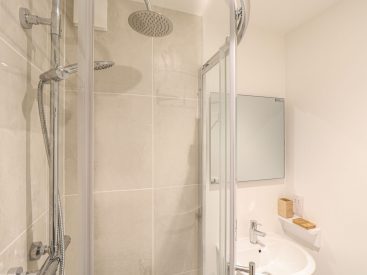Alternatives to Convection-based Heating

What options do you have when convection-based heating isn’t an option?
In the UK, convection-based heating is one of the most common ways to heat a room or space; it relies on heating the air and circulating it around to heat a room. A normal UK central heating system is based on the same technology.
The Romans were one of the first to invent the wet pipe system whereby hot water is passed around a property in order to heat it. Aside from the addition of radiators, not a lot has changed since then!
Examples of convection-based heating
Storage heaters – these heavy heaters will release warm air into a room over a number of hours.
Fan heaters – A power-assisted fan “blows” heat from a hot element at a high velocity.
Fireplaces – Fuel, such as wood or coal, is burnt to create heat. A fire will suck in cold air and release warm air as a by-product.
Convection-based heating does have its drawbacks, however. Warmth from a room can be easily lost if there is a draft, so for older buildings, the cost of heating will increase to make up for lost heat.
Storage heaters are commonly found in properties that aren’t connected to mains gas. These bulky heaters can be very expensive to run per hour, are difficult to control and tend to have a poor heat conversion rate.
Circulating hot air often brings dust and allergens along for the ride, which can aggravate those with allergies. For rooms that require a completely sterile environment, such as an operating theatre, convection-based heating is out of the question.
If you’re installing a new wet pipe system or replacing the radiators in your property, the cost is guaranteed to be high. Not to mention how disruptive the installation is.
Over the course of your central heating’s lifetime, maintenance will be a necessity and you are highly likely to encounter issues, whether it is for the boiler or a burst pipe.
What are the alternatives?
Infrared heating works in a completely different way to convection-based heating and is classed as a type of ‘radiant heat’.
Instead of heating the air, infrared rays heat objects directly. When an infrared ray hits an object, heat radiation is transferred on contact, making it a direct form of heating.
The sun emits infrared heat rays, which is why you can be outside on a sunny day in winter and still feel warmth on your body when in direct sunlight.
Infrared heating is much more direct than convection heating; people and objects will feel the warmth of infrared rays even when air temperatures around them are lower.
Infrared heating technology has been around for many years, but the way it is delivered has been greatly improved and refined over the past few years. The technology is quickly gaining popularity in the UK and across Europe.
Is it safe?
Many people associate the term ‘radiation’ with something harmful, but in fact, infrared radiation is one hundred percent safe and can be used in any home or workplace environment.
Far infrared heating methods
One of the most common methods of delivering infrared heating is via a heating panel. Typically, these will range in power from 160 watts to 1100 watts and when using premium materials such as carbon crystal, can be extremely efficient.
To find out more about our great value, high quality infrared heat panels, please do not hesitate to contact us on 0300 303 9625.


